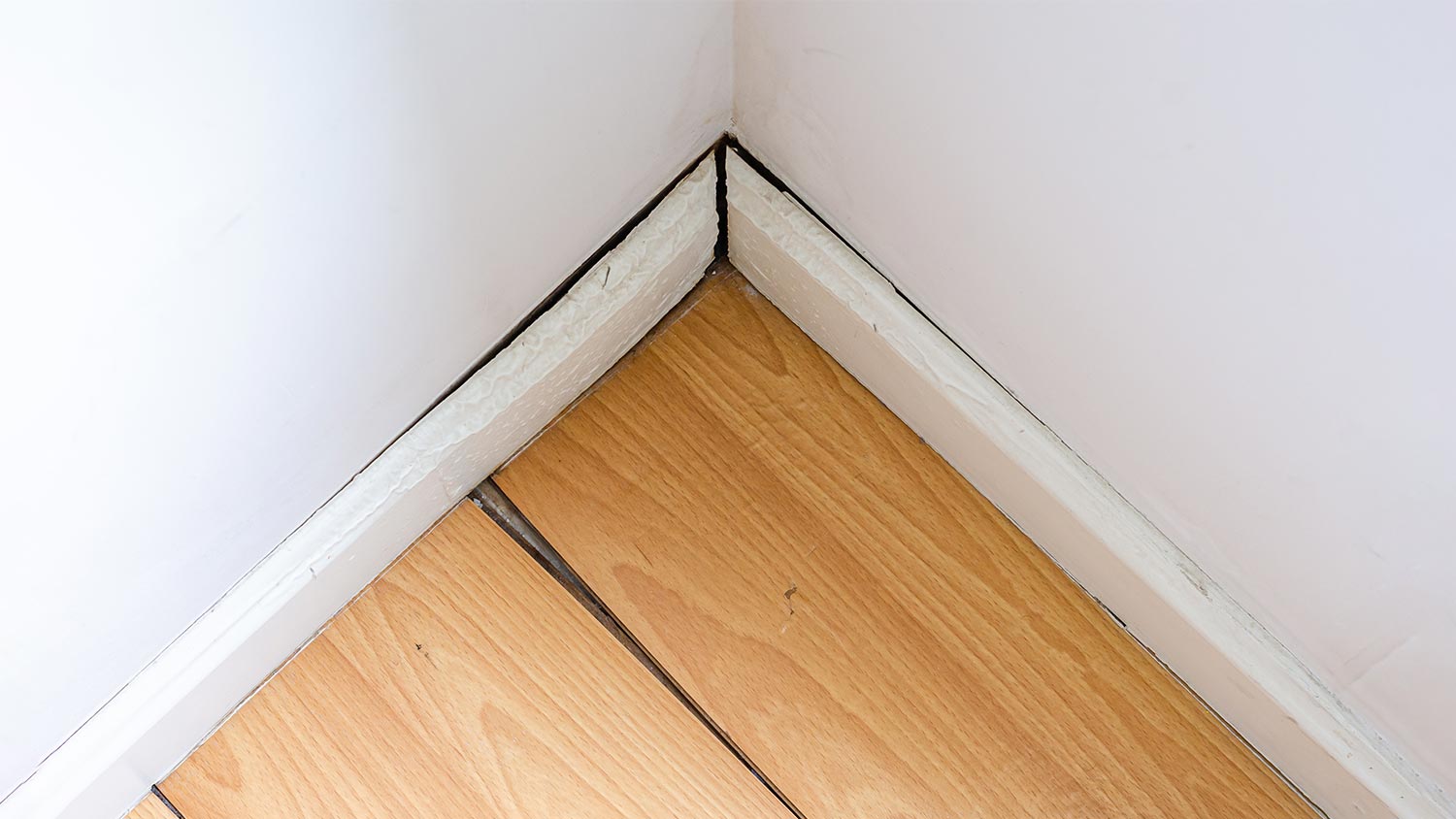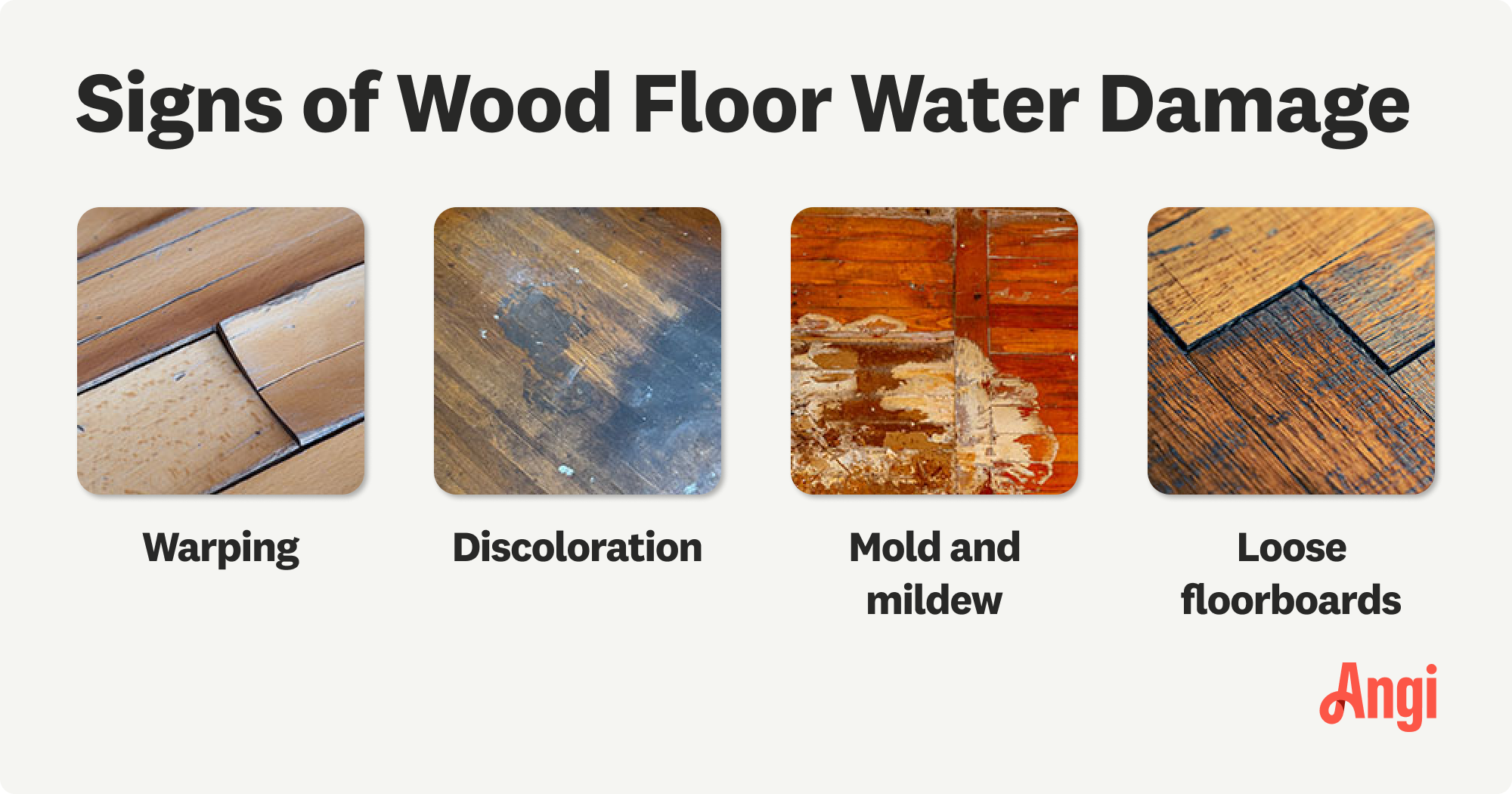7 Signs of Water Damage Under Your Floor
How to tell when something underfoot is afoot


The most obvious signs of water damage under the floor are physical changes to the flooring material, like stains, buckling, or warping.
Pay attention to musty odors, as they can signify problems even if your flooring doesn’t look damaged.
Hire a professional for repairs if there’s damage to your subfloors or the joists below, as these can indicate structural problems.
Visible water damage in your home can be alarming, but in many cases, hidden water damage is more dangerous and can lead to more expensive repairs. Knowing how to identify the signs of water damage under your floor is valuable, as you can assess for hidden damages after flooding or leaks occur. Let’s discuss the different signs and what to do about them.
Why Water Damage Under Your Floor Is Dangerous
Water damage under your floor may not be readily apparent, which means it can lead to issues building slowly over time. Persistent leaks can lead to mold growth under your floors, which can decrease your indoor air quality and create health risks in your living space. They can also attract pests and contribute to structural damage if they continue for a long time without repairs.
Signs of Water Damage Under Your Floor

While water damage under your floor can be difficult to assess, there are a few key things to look out for that can indicate a problem.
1. Physical Deformities

The most obvious signs of water damage under your floor are physical changes to the flooring material itself. On hardwood, laminate, or luxury vinyl plank (LVP) flooring, you may notice buckling, cupping, crowning, or warping. On laminate and LVP flooring, look for cracking or bubbling under the top protective layer, which suggests moisture is soaking through the planks.
2. Visual Changes
Other visual changes to your flooring include stains and discoloration. These tend to be the most obvious on carpets, but you may also notice water spots on hardwood flooring. Water stains on wood may look white or gray, while water stains on carpeting will be visibly darker than the surrounding areas. Be on the lookout for dark stains on flooring or between gaps in planks, as these can indicate mold growth under the material.
3. Unusual Odors

If the water damage under your floor isn’t obvious, it may persist and lead to mold growth. You may start to notice moldy or musty odors in the affected areas, which is a sign of hidden mold.
4. Pest Infestation
Pests like termites and carpenter ants are naturally drawn to moisture, so hidden water damage can lead to sudden issues with pest infestation. This isn’t a clear-cut sign of water damage under your floors, but if you’ve never had issues in the past and see a concentration of pests in a single room, hidden moisture could be the culprit.
5. Changes In the Feel of the Flooring
Water will gradually rot wooden subfloors and can even cause some types of flooring to deteriorate. This can create a spongy or soft feeling as you walk over parts of the floor. This may not be noticeable if you have a concrete subfloor, but pay attention to any minor bounce in your floors that you haven’t noticed in the past.
6. Unusual Noises

Water damage under your floors can rot floor joists and subfloors, and it can also attract wood-destroying insects and encourage mold growth, which can also damage those materials. You may notice sudden squeaking as you walk into the affected room. If you have carpeting, you can also listen for squishing noises as you walk, which could indicate that the carpet padding below is wet.
7. Other Changes in the Room
There are a handful of other issues to look for that can indicate water damage under your floor.
Wet drywall: Wet drywall along the bottoms of your walls can actually come from water soaking up from the subfloor. Check for soft or spongy drywall, stains, discoloration, and peeling paint.
Window leaks: Look for discoloration, peeling paint, or cracks in the drywall around the bottom corners of your windows, and for damage to baseboards under your windows. These can indicate a window leak that drips down under your floor.
Roof leaks: Check for water stains on the ceilings, soggy insulation in your attic, and missing shingles or other visible roof damage.
Appliance leaks: Check for puddles or moisture on the floor around appliances that use water, especially when they’re running.
How to Know You Need to Hire a Pro for Water Damage Under Your Floors
Discovering hidden water damage can be stressful, and you’ll need to act quickly to prevent it from worsening. So, do you DIY the repair or hire a water damage restoration pro? It depends on your DIY experience, floor type, and the extent of the damage.
Repairing water damage under laminate flooring and LVP flooring is relatively easy, so consider DIYing if you have some experience. Repairing water damage under wood flooring and carpeting is doable but more involved, so consider hiring a professional for the best results.
If you notice damage or rot on your subfloor or the joists below, or you find evidence of mold under your floor, it’s best to hire a water damage restoration company near you for a comprehensive fix that won’t leave you with worsening problems.
Can I DIY Water Damage Repairs?
It’s possible to DIY water damage repairs to your flooring, especially if you have laminate or LVP flooring that’s easy to work with. If you have the tools and some experience, though, you can DIY the repairs to any flooring type. Just remember to call in a pro if you find more damage than you realized was present, especially if you notice signs of structural damage or mold problems. The permanent solution you get will be well worth the cost of water remediation.
How to Prevent Water Damage Under Your Floors
Preventing water damage under your floors is challenging because the water can come from a variety of sources. Here are some good practices to avoid leaks that can contribute to flooring damage.
Get your roof inspected annually and repaired as needed.
Keep up with window maintenance and repair or replace at the first sign of a leak.
Keep an eye out for appliance and plumbing leaks and address them right away.
Inspect your rooms routinely for signs of water damage under the floor.
Invest in a moisture detector and scan your floors if you suspect an issue.
How Much Does It Cost to Replace Water-Damaged Floors?
The cost to replace water-damaged flooring in a room averages $3,150, and most projects will total between $1,500 and $4,900. Your price will depend mostly on the type of flooring you install and the square footage you need replaced. You’ll spend more per square foot on higher-end materials like hardwood, stone, and tile, while options like carpet, laminate, and linoleum will be much more affordable.
Frequently Asked Questions
If water gets under your floors, the first step in the water remediation process is to identify the source of the issue and stop the leak. Next, run blower fans and dehumidifiers in the room for 24 to 72 hours to dry it out. You can then assess damage to the flooring and identify areas that need repairs or replacements.
Homeowner’s insurance will normally cover water damage to your floors if it’s a result of a natural disaster or flood, especially if you’re in a flood zone and have flood insurance. If the issue stems from a roof leak or plumbing issue that’s a result of negligence or deferred maintenance, your provider may not cover repairs. Contact your insurer to confirm coverage before hiring a water remediation specialist.








.jpg?impolicy=leadImage)






